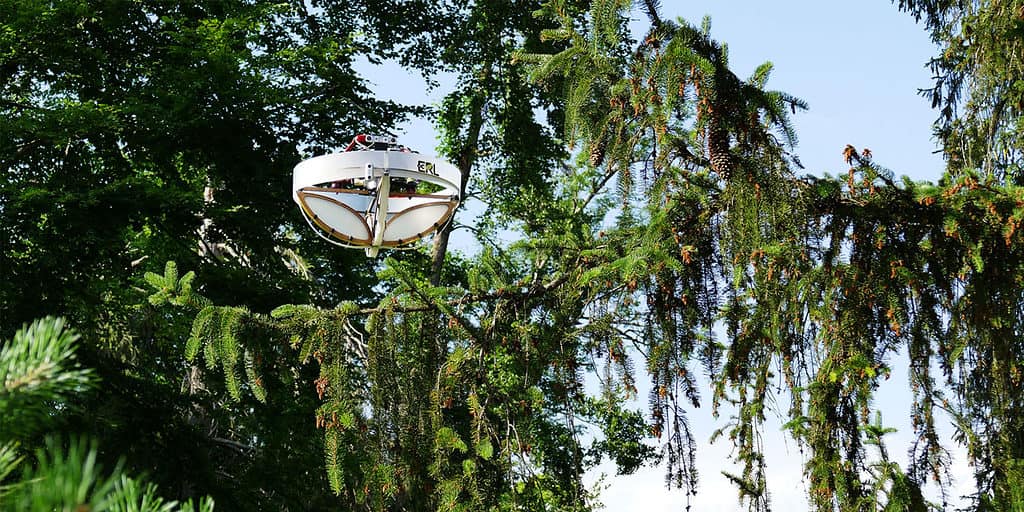If a tree falls in a forest and no one is around to hear it, it may or may not make a sound — but it definitely leaves some genetic material behind. This type of material left behind by creatures is called environmental DNA (or eDNA), and it’s a great way of understanding some things about an ecosystem.
Advancements in DNA technology, especially in environmental DNA (eDNA), now allow scientists to know what wildlife visited an area based on the genetic material in poop and microscopic skin and hair cells, but collecting eDNA in forests is a difficult endeavour. Forests are big open spaces that aren’t always accessible, such as canopies. One way to solve this is to focus on a specific surface to sample eDNA from and use a small robot to get to places where humans can’t.
Or better yet — a flying robot.

Sampling the forests
Researchers at ETH Zurich and the Swiss Federal Institute for Forest, Snow, and Landscape Research WSL have partnered with the company SPYGEN to develop a drone that can automatically collect samples on tree branches. It looks like a miniature flying saucer or a levitating basket and has a cage-like structure made up of four arcs.
After being guided to a generally favorable position, the drone hovers above a tree branch to be sampled and monitors any movement, synchronizing its approach. When it makes contact with a branch, it pushes with enough pressure to cause loose eDNA materials to transfer to adhesive strips – which are then taken to the lab by the team.
But not all branches are the same. They change in terms of elasticity and thickness. Branches can also bend and rebound when a drone lands on them. Programming the drone in a way that it can still approach a branch and remain stable on it for enough time to take samples was a big challenge for the team in Switzerland.
“Landing on branches requires complex control,” Stefano Mintchev, study author, said in a statement. Initially, the drone doesn’t know how flexible a certain branch is, so the researchers fitted it with a force-sensing cage. This allows the drone to consider this factor at the scene and incorporate it into its flight maneuver, the team explained.
The researchers tested their device on seven tree species. They found DNA from 21 different groups of organisms, including birds, mammals and insects. “This is encouraging because it shows that the collection technique works,“ said Mintchev, who co-authored the study that has just appeared in the journal Science Robotics.
Now, they want to improve their drone even further to get it ready for a competition in which the objective is to detect as many as different species across 100 hectares of rainforest in Singapore in one day. They are now training at a zoo in Zurich, the Masoala Rainforest, which has similar conditions to the ones of the actual competition.
The new study is only the first step, the researchers said, and more will be needed to understand how the performance of the drone could be affected by tree species beyond the ones they tested or by changing environmental conditions. eDNA gathering by robots could eventually become a popular way to obtain eDNA in forests, they said.
“The development of eDNA surveys is unlocking new possibilities for monitoring biodiversity and, in combination with drone-assisted eDNA collection, has the potential to be scaled up to verify the recovery and resilience of the biosphere,” the study concludes.









